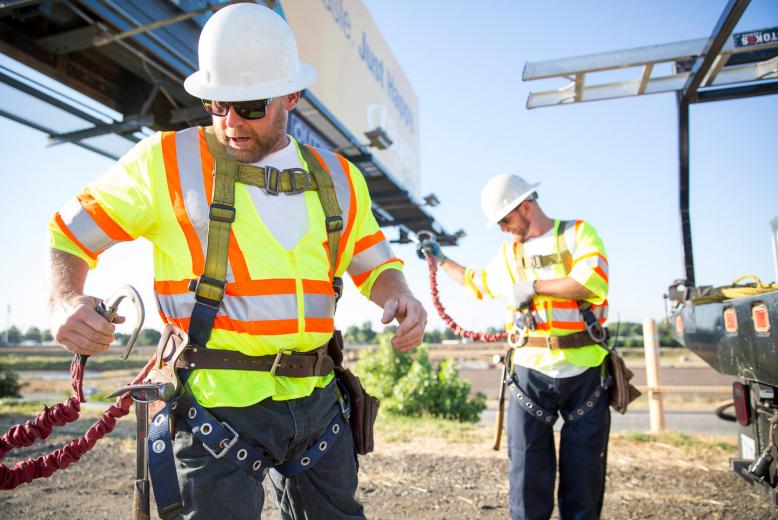
Safety comes first for billboard crew members Rick Barton (left) and Daniel Stutes (right), of Outfront Media, as they change out a billboard along Capital City Freeway in Sacramento. New employees undergo hands-on climbing training, which covers harness safety and personal protective equipment training; everyone has annual classroom study

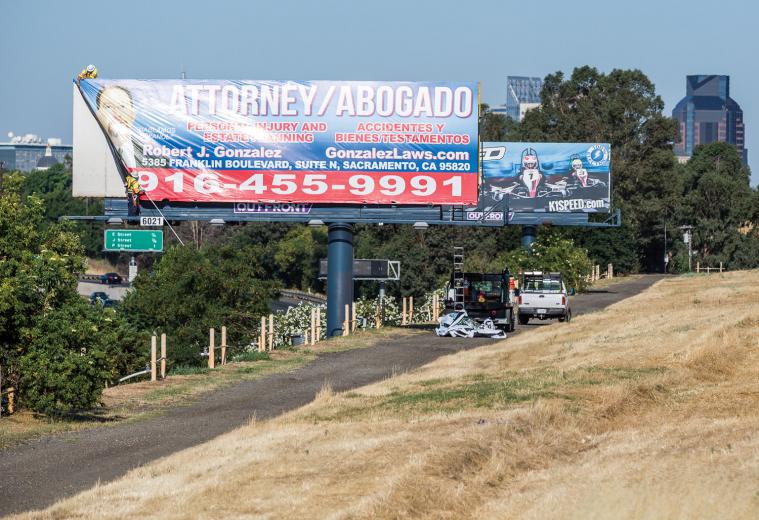
On this morning, the men first pull down an old vinyl (billboard speak for “sign”) before installing the new one — advertising a local law firm — as commuters speed past on the road below.
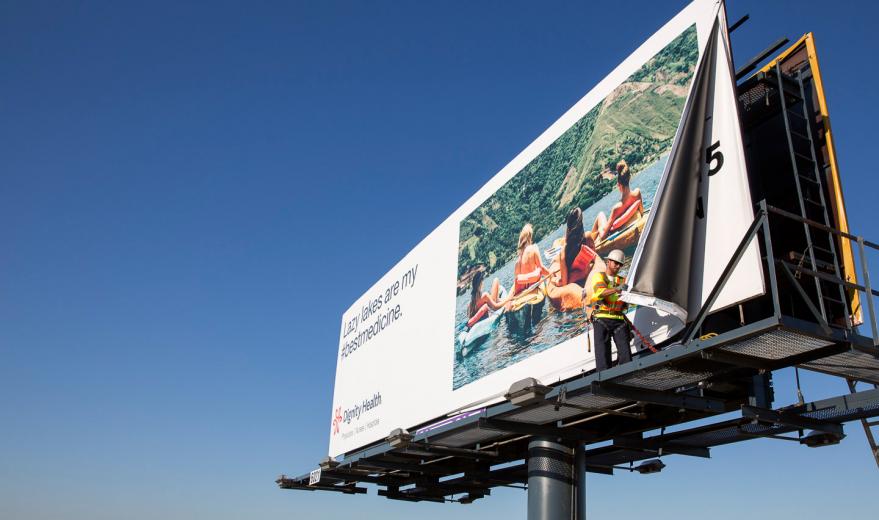
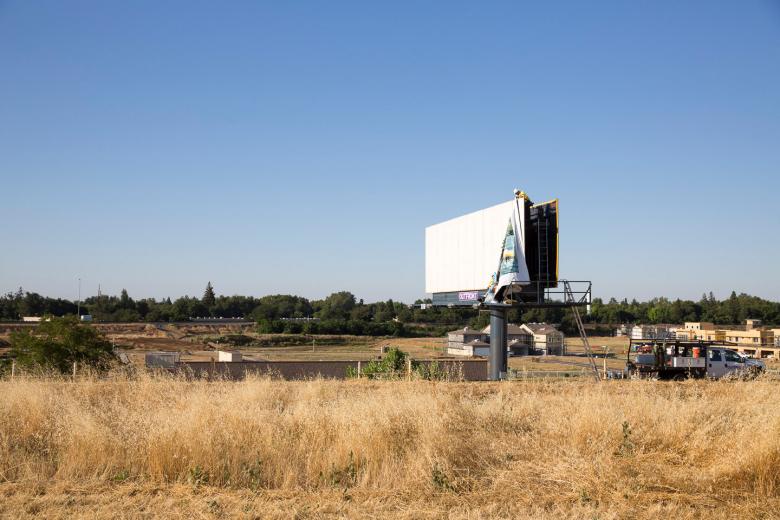
Normally, two people form a crew, but that’s flexible. “Sometimes, depending on if it is a larger vinyl … or in a high breeze with a little bit of wind, we will add one or two more people to the crew for that day or location,” explains Operations Manager Forrest Porter. It normally takes an hour or less for a crew to install the billboard, depending on its size and the day’s weather conditions. A crew will complete five to eight installations in a typical eight-hour day.
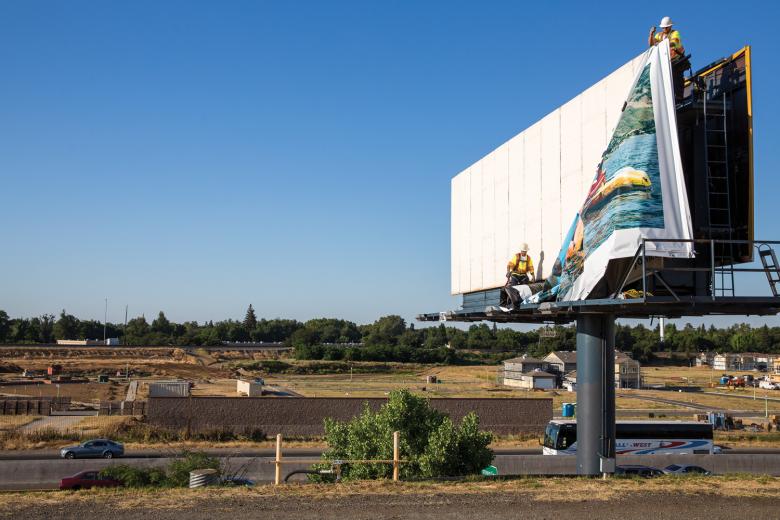
Crew member Daniel Stutes (bottom) joined Outfront Media as a billboard installer in 2002. Rick Barton (top) has been part of the company since 1999.


Billboards have been a staple of American advertising since the late 1800s. Originally, crews pasted several strips of posters together to create one large billboard. Now, they use vinyl engineered to withstand harsh weather — the material is waterproof and UV protected.

The vinyl can come in one piece or in multiple panels seamed together, depending on the size of the vinyl being installed, says Operations Manager Forrest Porter. In the Sacramento area alone, Outfront operates 610 bulletins, 848 posters and seven digital displays.
High Vinyl
Raising vinyl on the roadside


